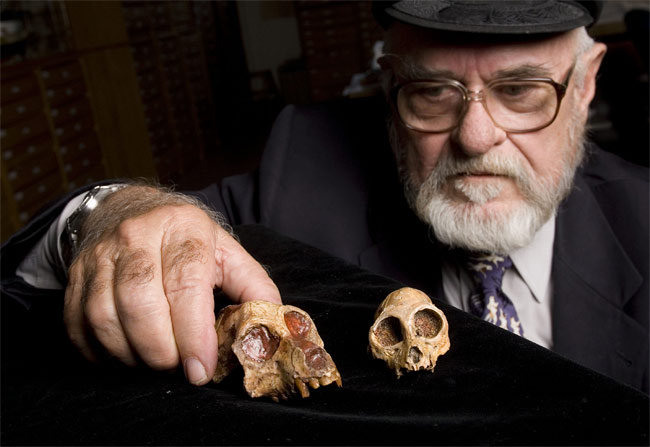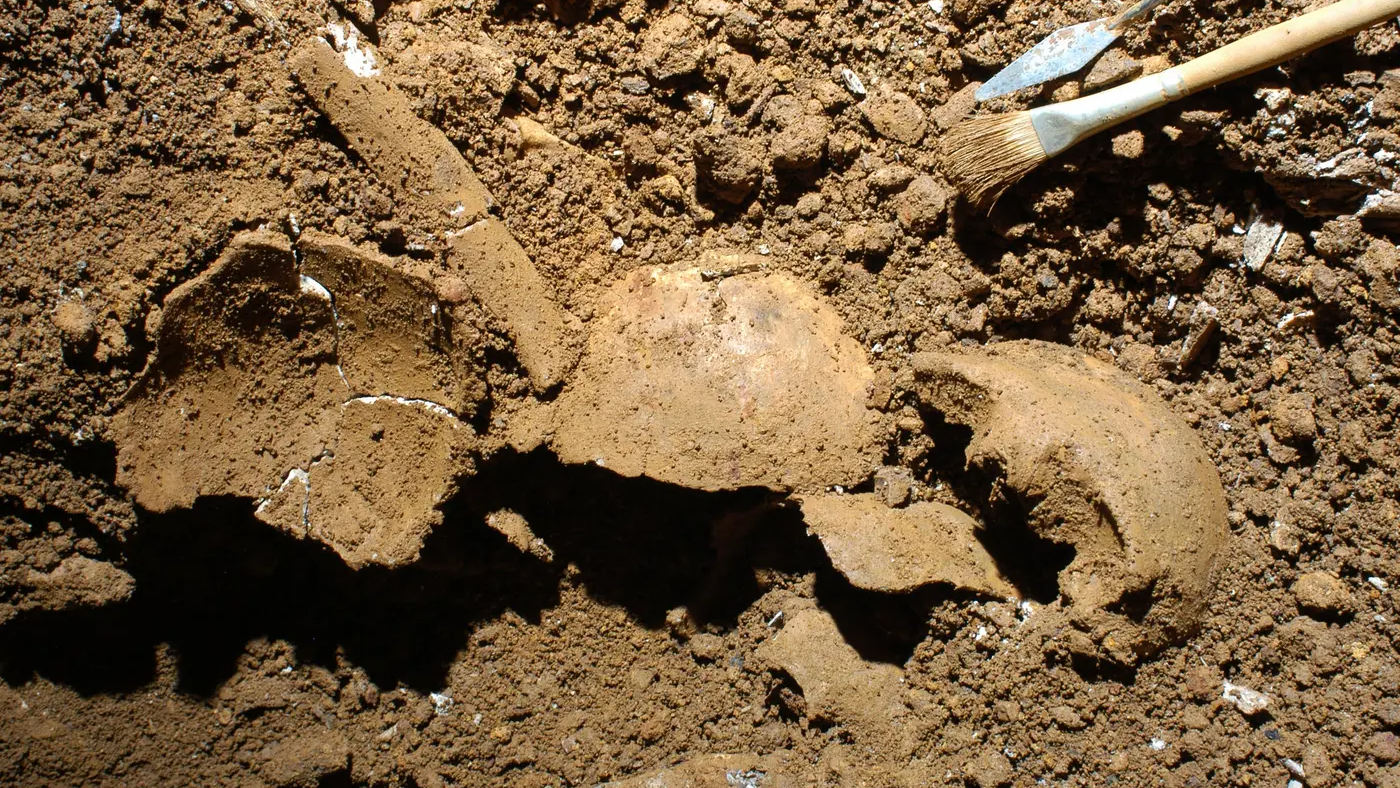Human Ancestor Had a Pea Brain

Higher primates such as humans are considered the brainiacs of the mammalian world. But a 29-million-year-old fossilized skull suggests that one of our remote ancestors was a bit of a “pea brain,” sporting a noggin smaller than that of a modern lemur.
The skull belonged to a common ancestor of humans, monkeys and apes.
"This means the big-brained monkeys and apes developed their large brains at a later point in time,” said lead study author Elwyn Simons, a Duke University primatologist.
Until now, scientists had assumed brain size was a key feature that defined higher primates, a category that includes humans, monkeys and apes. The larger brain relative to body size also has provided paleoanthropologists with a physical marker for the evolutionary distinction between higher and lower primates, which include lemurs of Madagascar.
Tiny enough to fit into the palm of your hand, the skull comes from a female Aegyptopithecus zeuxis, which means “linking Egyptian ape.” This early monkey lived about 33 million years ago, a time when primates were evolving rapidly. The cat-size primate ate fruits and leaves in a tropical rainforest in what is now the Fayum in Egypt.
The discovery, published online this week in the journal Proceedings of the National Academy of Sciences, sheds light on the evolution of human-like brains .
“The reason Aegyptopithecus is so important is that it’s at the base of the family tree of the Old World higher primates, the group that we’re in,” Simons told LiveScience. “So this is telling us something about the chapter in our own ancestry.”
Get the world’s most fascinating discoveries delivered straight to your inbox.
Small minded
Simons and his team dug up the skull in 2004 from a quarry called the Jebel Qatrani Formation in Egypt. The cranium was so well preserved the team used micro computed-tomography (CT) scanning, which relies on X-rays, to recreate the inside of the skull and calculate dimensions of the brain it once encased.
He had found a similar, but fragmented skull at the site in 1966. Comparing dimensions of the old and new skull suggests the 1996 specimen belonged to a male, while the new skull was that of a female. The size of the female skull suggests it “had a brain that might have been even smaller than that of a modern lemur's," Simons said.
The new skull also suggests the species had a much smaller brain than was previously estimated based on the 1966 skull.
“It’s a little surprising to find out that the brain volume on this thing indicates that maybe the New and Old World monkeys, their common ancestor had a prosimian-, or lower-primate-like brain like Aegyptopithecus does,” Simons said.
Sex differences
The team estimates the female weighed about five and a half pounds, or half the weight of the male. This size difference between males and females, called “sexual dimorphism,” is comparable to that in gorillas, whose genes make them our second-closest relatives next to chimpanzees.
The stark size difference indicates the monkey-like animals were social and hung out in multi-male and multi-female troops of 15 to 20 individuals. “If we infer that an Aegyptopithecus had a large social group, that suggests it had enough sense to tell all of those members apart from nonmembers,” Simons said.
"But other features in these skulls, and in many other Aegyptopithecus fossil pieces collected at the Egyptian site over four decades, suggest that this primate was already branching away from its lemur-like ancestry," he said.
Other features also point to an evolving primate. The skull shows features similar to other higher primates, including a developed visual cortex, suggesting Aegyptopithecus had acute vision. "So the visual sense, which is regarded as a very important feature of anthropoids, or higher primates, had already expanded,” Simons said.
And unlike the prosimians, which run around at night, the animal had small eye sockets and was likely diurnal (awake during daylight) like modern and ancient higher primates.
- Top 10 Missing Links
- Why Haven’t All Primates Evolved into Humans?
- All About Evolution
Jeanna Bryner is managing editor of Scientific American. Previously she was editor in chief of Live Science and, prior to that, an editor at Scholastic's Science World magazine. Bryner has an English degree from Salisbury University, a master's degree in biogeochemistry and environmental sciences from the University of Maryland and a graduate science journalism degree from New York University. She has worked as a biologist in Florida, where she monitored wetlands and did field surveys for endangered species, including the gorgeous Florida Scrub Jay. She also received an ocean sciences journalism fellowship from the Woods Hole Oceanographic Institution. She is a firm believer that science is for everyone and that just about everything can be viewed through the lens of science.


